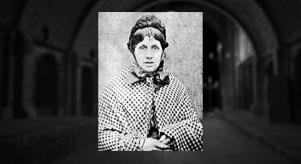
Infanticide: Why Mothers Kill Their Children
In 2011, America became obsessed with a homicide which developed into a kind of 21st Century, Internet-age reboot of theOJ Simpson trial. The facts mirrored the predecessor perfectly: a shocking crime, a plethora of evidence, a guilty-seeming suspect, a shocking and controversial acquittal. But this version of the old story didn’t involve a celebrity
It was because her alleged victim was her own infant daughter, Caylee. Not only that, but Casey was painted in the media as aloof and uncaring – a sort of lethally immature child-woman who’d suffocated her little girl and then casually carried on with her life. She was, in the words of one headline, a “monster mom”. And, despite being found not guilty, she’s widely regarded in much the same way today.
There’s something paradoxical about the phenomenon of child murder. It triggers a fundamental revulsion, horror and shock, as you might expect from a freakish crime that defies our natural programming to protect and care for children. Yet, statistically speaking, it’s not freakish at all. In the words of anthropologist Laila Williamson, “Infanticide has been practiced on every continent and by people on every level of cultural complexity, from hunter gatherers to high civilizations, including our own ancestors.” Her conclusion is blunt: “Rather than being an exception, then, it has been the rule.”
From the days of Mayan child sacrifices through to appalling acts of “family annihilation” today, there have multiple reasons why adults have extinguished the lives of young children. Poverty, societal pressures, religion and gender politics have all played their roles. The phenomenon has been so bound up with human experience that it’s a common theme in the founding myths and legends of civilization. Take the story of Oedipus, which has the tragic hero abandoned on a mountaintop as an infant by his own father. Or the tale of young Paris – future beloved of Helen of Troy – who was also deliberately abandonment to the elements.
Medea is driven to a frenzy by her own weakness and inability to determine her fate.
And then there’s the dark saga of Medea, granddaughter of Helios the sun god, lover of the great hero Jason, and subject of a great tragedy by Ancient Greek dramatist Euripides. Enraged by Jason’s willingness to marry a royal bride for the status and prestige it would bring, the scorned Medea takes the ultimate revenge by murdering their own children. This story sets out the archetypal template for vengeance infanticides. Many such crimes that hit the headlines today – such as the case of Fiona Donnison, the Surrey woman who in 2010 killed her two children to get back at an estranged partner – echo the tragedy of Medea.
The power of Euripides’ story lies as much in the context as the crime itself. It’s not just the definitive story of a parent being moved to murder by feelings of rage and bitterness. It also highlights another reason for infanticide through the ages: namely, the historical helplessness of women in a male-dominated society. Medea is driven to a frenzy by her own weakness and inability to determine her fate. She is also derided as a mere “barbarian” compared to the wealthy, prestigious bride Jason has in mind.
An unforgiving and unequal society led to a spate of horrors in Victorian Britain. Amid the muck and toil of the Industrial Revolution, many unmarried mothers were driven to desperate measures by poverty, stigma, or both. This led to the rise of “baby farmers”, who, for a fee, would take responsibility of the infants and pass them onto foster families. But some of these individuals simply killed their charges instead. As academic Dr Charlotte Beyer says, “Countless babies and children suffered and died as a result of this practice and in many cases, 'fostering' meant killing - slowly or quickly.”
The most notorious example is that of Amelia Dyer, the nurse who posed as a respectable, caring woman, but who is thought to have strangled or poisoned hundreds of children during her grisly career as a baby farmer. Another Victorian child murderer was Mary Ann Cotton. She wasn’t a baby farmer, but – like Dyer – she regarded murder as a means to an end, killing husbands to collect on insurance and killing her own children as they were in the way.
Whether the motivation is rage over a relationship breakdown, as in the case of Petros Williams, the Manchester man who filmed his kids saying goodbye to their mother before he choked them to death, whether the act has resulted from neglect and marginalization, or whether the truth behind the crime will always be opaque and eerie, as in the Casey Anthony case, child murder is a phenomenon that is a gut-wrenching and culturally resonant today as it was in the days of the Greek tragedies.




